There’s a quiet revolution playing out in the world of football: clubs are delivering their own, original content. And doing it brilliantly.
The emergence of social media and digital platforms has enabled clubs to reach out to supporters in ways that simply weren’t possible before. There has been a real shift in the relationship between football club, to media, to fanbase. Traditionally, clubs relied on the media to share and spread their news, briefing journalists and broadcasters in press conferences before and after matches.
Clubs have long had websites, of course, but for many, many years they were functional and one-dimensional - not much more than portals for displaying fixtures, ticket prices, and PR-heavy official interviews with players and management that did little to inspire or educate. If fans actually wanted to read anything interesting about their own club, they didn’t go directly to the club. Quite the opposite, in fact - the role of the media and communications team at a Premier League football club appeared to be focused on making sure nothing interesting, or revealing, or engaging, was ever shared at all. And I say that as someone who, once upon a time, spent hours and hours hanging around training grounds, negotiating with press officers, requesting numerous player interviews - and wondering why everyone seemed so ferociously protective all the time.
I can understand the wariness when it comes to trusting journalists, and the need to assert control over what is asked, written and reported. But it seems football clubs have realised how best to achieve that control - create eye-catching content themselves. Hey, did someone mention the Brand as Publisher concept here?
Of course, there’s still a place for football journalists and writers, particularly those who can provide thought-provoking, insightful opinion and give the reader something new, and fresh, and genuinely exclusive. There are three or four such journalists that I rate so highly, I’d read just about anything they write - grocery shopping lists included. But in terms of breaking news, transfer exclusives and those juicy updates that supporters gobble up with glee? Increasingly, football clubs are doing this so much better than anyone else - let’s take a look at the very best recent examples of original content, delivered directly from clubs to their eager fan bases.
Transfer signings
In recent seasons, football clubs have certainly raised the bar when it comes to announcing new signings. In this sense, it’s the club themselves who really hold the power, being better informed than any form of media when an incoming player has passed his medical, and put pen to paper - and of course, there’s no more reliable or trustworthy source of information on a transfer for fans than the club that has completed the deal.
Instead of playing a passive role, allowing other media outlets to confirm a transfer deal and then following up with the tired and lame formula - player pictured holding shirt, bland quotes from player and manager - clubs are getting increasingly creative with such announcements. So far during the 2017-18 season, we’ve seen Aston Villa creating a player WhatsApp group and then adding John Terry into it; Southampton hilariously (and deliberately) going way over the top with a dramatic blockbuster movie theme to announce a one-year contract extension for reserve goalkeeper Stuart Taylor; and a rather sinister ‘kidnap’ plot that saw released Manchester City winger Jesus Navas bundled into the boot of a car and driven to new club Sevilla.
During the January transfer window, Manchester United’s signing of Alexis Sanchez from Arsenal stole the headlines - and the social media shares. At the last glance, the signing video was retweeted 158,000 times on Twitter, liked 211,000 times - and drew 14,000 comments; 14,000!
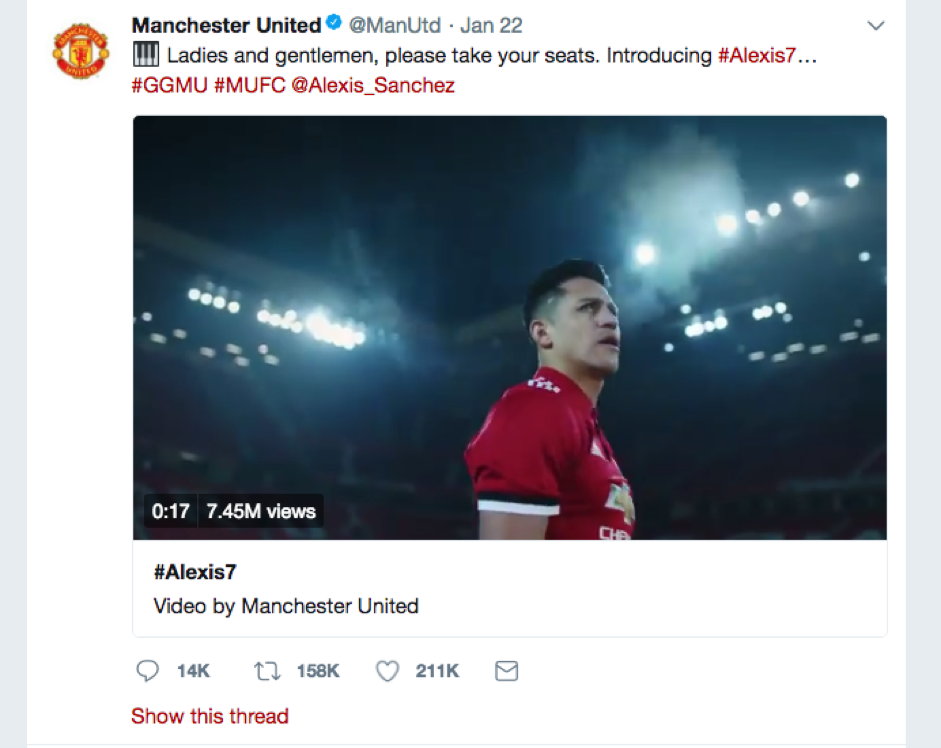
Humour
Through social media, football clubs have found their voice. Whereas clubs - especially those at elite level - may have once presented a cold, corporate persona, today the shackles appear to be off. Of course, there are lines that should never be crossed but the overall impression is that those in the media, communications and marketing departments of football clubs seem to be having a lot of fun. Football clubs can be funny, warm and sympathetic and, as a consequence, can strengthen engagement with supporters.
Viewers watching Manchester City’s FA Cup tie against Cardiff on BBC at the end of January were wowed by the sheer impudence of Kevin De Bruyne’s opening goal, adroitly rolled under the Cardiff ‘wall’ as a line of defenders jumped up to head away a ball that never arrived. It was a fantastic goal - inventive and confident, and made possible, in part, by the pre-match preparation of City’s coaching staff.
How did City’s social media team react?
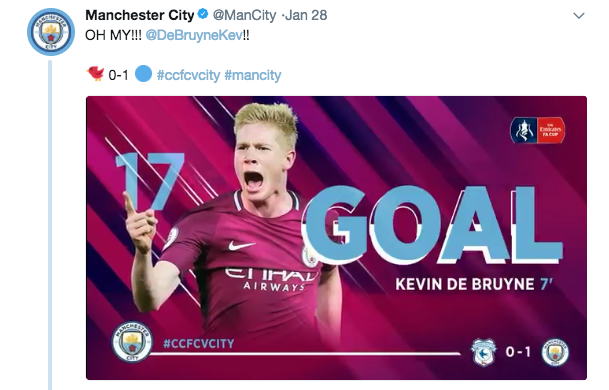
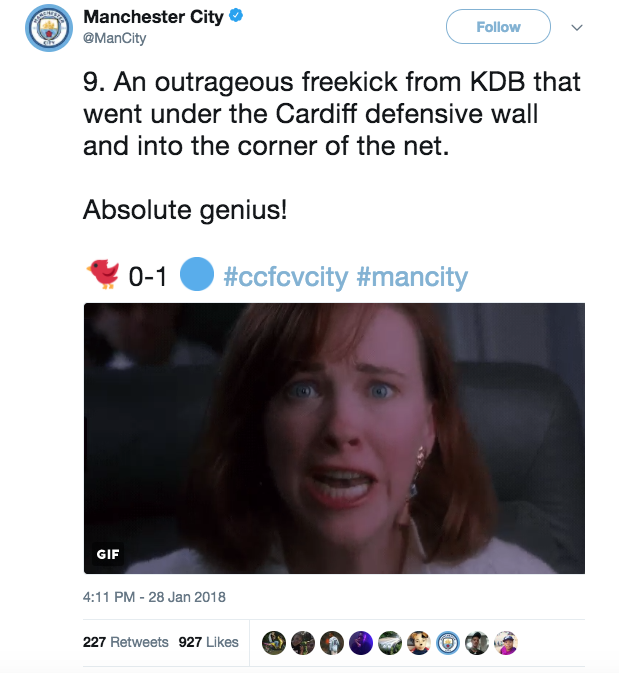
Video
Obviously, video plays a hugely important role in the output of football clubs. The key, for those who do it successfully and effectively, is sharing content that simply cannot be seen anywhere else. Match footage and highlights, pre and post match interviews and press conferences are all standard fare and broadcast on various TV channels. But football clubs have first-class access to hundreds and hundreds of hours of exclusive material that is absolutely perfect for passionate supporters.
FC Barcelona’s Facebook page has more than 100m followers. Its video section is extensive and, crucially, varied. Fans can watch goals, match highlights, interviews with players - routine stuff. But they can also watch the very first training session experienced by a new player - Philippe Coutinho, for example - behind the scenes footage and random, entertaining clips. Fancy watching the Barcelona squad playing games of tic-tac-toe during training? Well, at the time of writing 7.4m had.
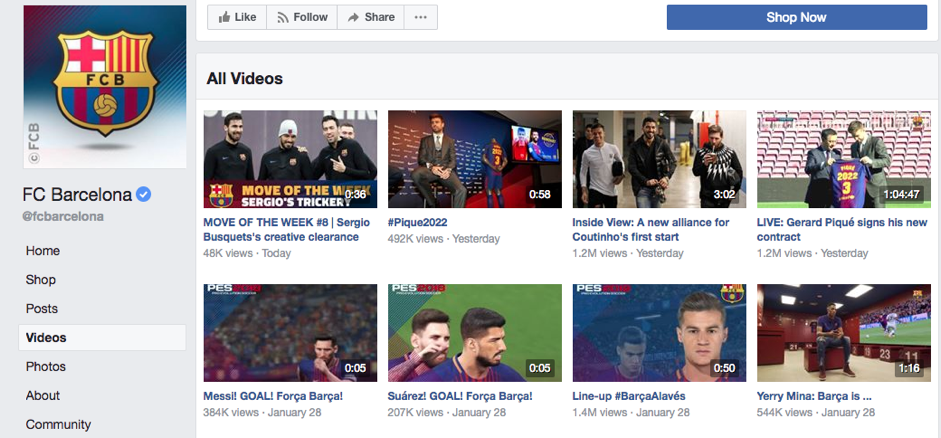
Barcelona isn’t the only major football club to embrace video to its full potential, of course. For example, the likes of Arsenal and Manchester City have thriving YouTube channels; in October 2017 City become the first Premier League club to reach 1m subscribers.
Translation
Football is a global game for the truly elite clubs, which have fans all over the world. To reflect that, and to maintain that reach with supporters in other parts of the world, some clubs have developed content in multiple languages.
The German Bundesliga club, Bayern Munich, is a great example. Check out their Twitter pages. In addition to its main, German account, Bayern has several foreign language accounts, including:
English...
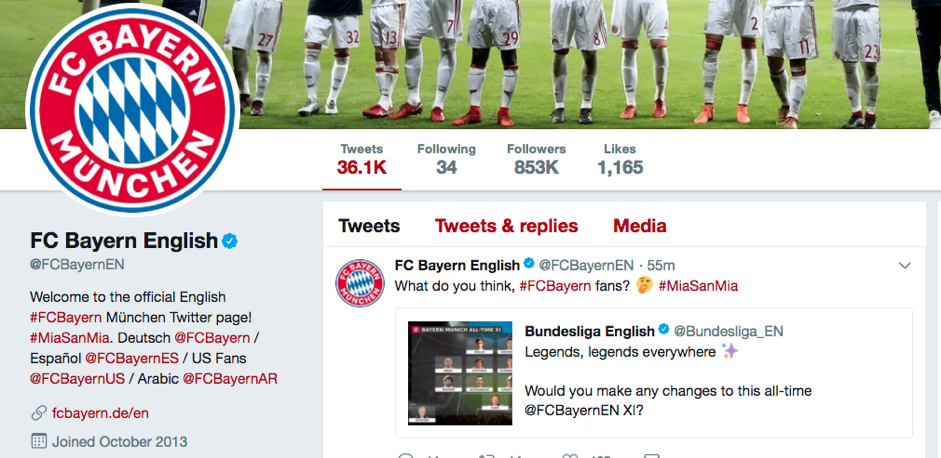
Spanish….
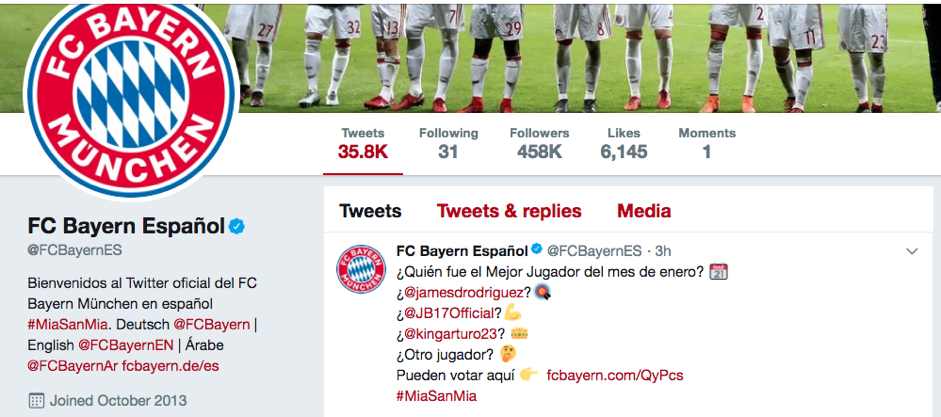
Arabic….
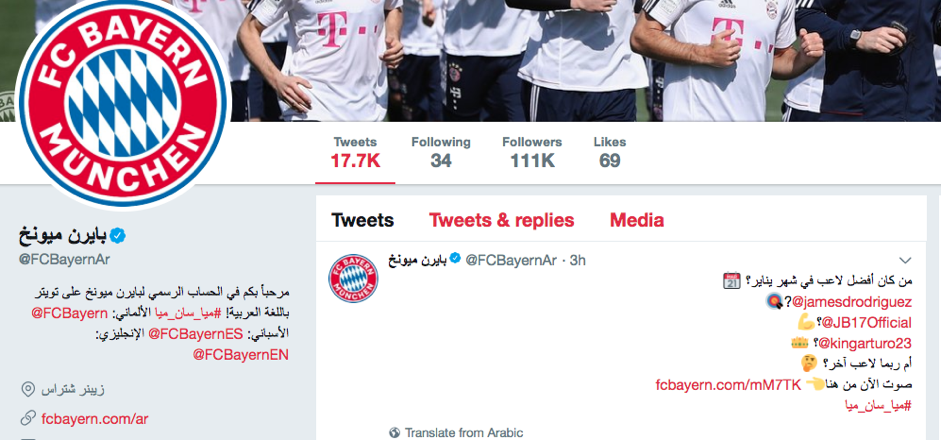
Fan Collaboration
The most valuable commodity any football club has is its fanbase. Ultimately, these are the club’s customers - treat them properly, and they’ll stick with a club for a lifetime. Make no mistake, there’s no-one who knows a football club better than a supporter, so the smartest and shrewdest media teams are reaching out to the fans and flattering them with the greatest of compliments. They’re asking fans for their opinions.
A great recent example of this was AS Roma’s website redesign. When the Italian club’s website was ranked 26th (out of 32) by UEFA in 2015 - all that season’s Champions League teams were assessed - the disappointing result spurred Roma on to improve. Roma’s Head of Digital posted on social platform Reddit, asking supporters for feedback, critique and suggestions.
The result was a vastly improved new website, absolutely packed with brilliant content, just a small section of which you can see here:

Not only that, in the latest study by UEFA - shown here - Roma were rated sixth; an improvement of 20 places. All websites are ranked across a range of criteria, including website objective, user orientation, look and feel, responsive design, language and writing, multimedia. In No.1 spot, incidentally, went to German club Leipzig.
Of course, fan collaboration isn’t always positive, but it can still be worthwhile. When Leeds United proudly unveiled its new crest towards the end of January, it did so on Twitter with the comments, ‘6 months of research, 10,000 people consulted, Ready for the next 100 years’:
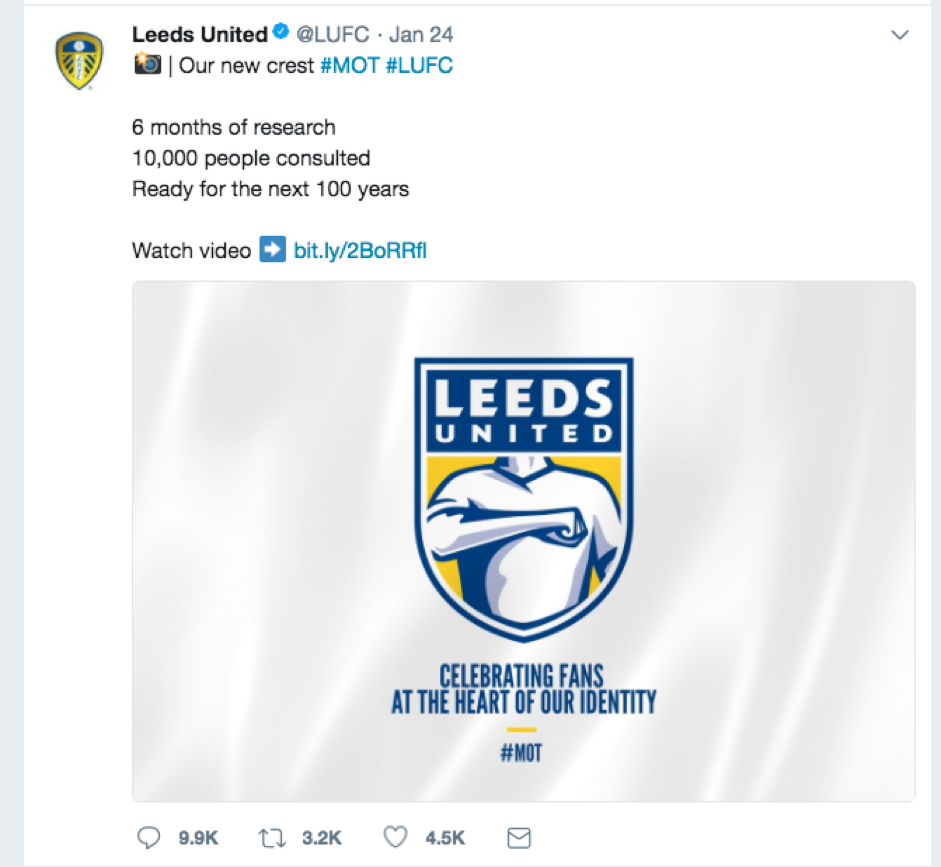
The post had 4.5k likes - and more than twice as many replies. The reaction was one of furious disappointment and outrage.
Just five days later, on January 29, Leeds issued an update on what it called the ‘proposed’ crest change. The club confirmed further engagement with supporters and invited fans to submit design ideas ahead of a meeting in the future.
Did the announcement from Leeds backfire? Yes and no. The reaction from supporters was intensely negative and within just a few hours the club were already reviewing their decision.
However, that engagement at least allowed Leeds to pause and reconsider. The alternative could have seen the club roll out the logo on its official website and merchandise and then receive supporter reaction - when it would have been too late, and too expensive, to change course.
The world of football makes for great content and, through clubs now fully embracing the reach of digital media, supporters now have access to reams and reams of it - exclusive, unrivalled material virtually on a daily basis.
This isn’t to say that third parties don’t have a vital part to play. There’s huge anticipation surrounding the forthcoming fly-on-the-wall documentaries featuring Juventus (on Netflix) and Manchester City (on Amazon).
But increasingly, the very best content is coming directly from football clubs maximising their brand and acting as publishers and broadcasters.
Sign up for our monthly newsletter and follow us on social media for the latest news.





 Proudly part of IPG Mediabrands
Proudly part of IPG Mediabrands